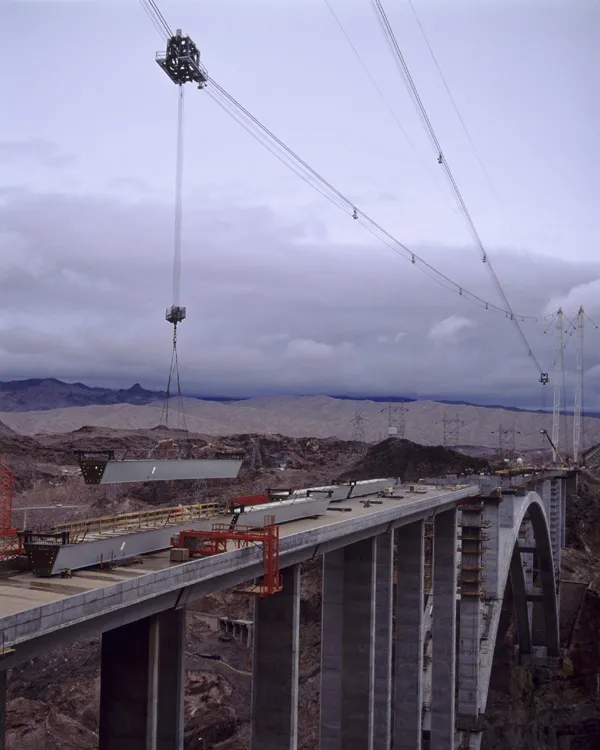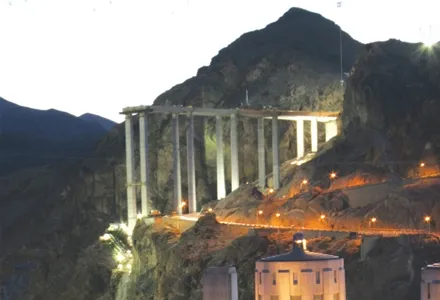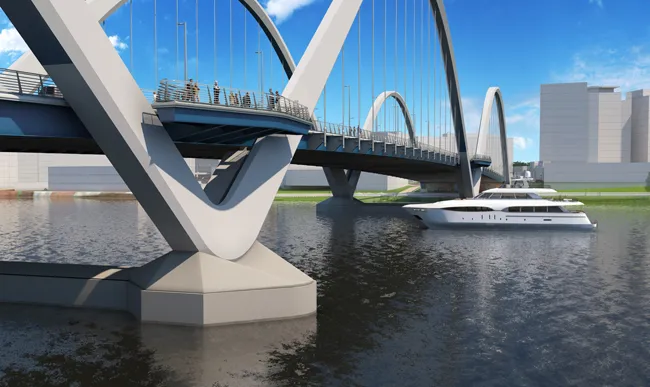A series of highway and bridge projects across the US have been recognised for their contributions to environmental protection and mitigation.
February 29, 2012
Read time: 4 mins
A series of highway and bridge projects across the US have been recognised for their contributions to environmental protection and mitigation. Awards were made as part of the American Road & Transportation Builders Association Transportation Development Foundation's (ARTBA-TDF) 12th annual "Globe Awards" event.
The Globe Awards recognise private-sector firms and public-sector transportation agencies that protect or improve the natural environment in the planning, design and construction of U.S. transportation infrastructure projects. They also highlight transportation construction-related product manufacturers and material suppliers that use exemplary environmental processes to protect the environment.
An independent panel of industry professionals reviewed all of the nominations and selected the winners. In the category for bridges (for projects worth over US$100 million), first place went to FHWA-2408 Central Federal Lands Highway Division (CFLHD), 2418 HDR, 3355 TY Lin International, and 1662 Jacobs Engineering for the Hoover Dam Bypass. The $240 million Hoover Dam Bypass connecting Nevada and Arizona is remarkable for the magnitude and complexity of building a 1 concrete arch bridge across a rugged canyon over the Colorado River. It also now moves US traffic off the historical Hoover Dam, improving security, driver and pedestrian safety, and traffic mobility in the region. Second place went to the Pennsylvania Turnpike Commission, FIGG Bridge Engineers, and Walsh Construction Company for the I-76 Allegheny River Bridge. The $190 million I-76 Allegheny River Bridge near Pittsburgh is the first long span concrete segmental bridge in the Pennsylvania. To protect the aquatic habitats and archaeological areas below the bridge, the new piers were placed very close to the riverbanks. Balanced cantilever construction also preserved eco-habitats and other sensitive areas.
In the category for bridges costing less than $100 million, first place was awarded to3359 Utah Department of Transportation (UTDOT) and FIGG for the US 191 Colorado River Bridge. Located in the environmentally sensitive Colorado River watershed in Moab, Utah, the US 191 Colorado River Bridge improved the aesthetics of the area and provided the state with the least-cost structural alternative. By reducing the number of piers from eight on the existing bridge to two, and providing for top-down construction methods, the river habitat was protected. In an effort to benefit environment, aspects of the construction, from the profile of the bridge to the complex color palette were designed in likeness to the Arches National Park. The concrete mix was engineered to have a service life of more than 100 years, further minimizing future construction environmental impacts.
Second place went to TY Lin International and the Centre City Development Corporation, Safdie Rabines, for the Harbor Drive Pedestrian Bridge. With construction of Petco Park, the downtown home of the San Diego Padres1316 Major League Baseball club, the need arose for this $27 million, grade-separated pedestrian crossing of six railroad tracks and Harbor Drive, and four lane major arterial. The project team, with extensive community involvement, designed and built a bridge using materials appropriate for a marine environment such as stainless steel rather than painted steel.
An honorable mention in this category was also awarded to the joint venture team of2758 Flatiron Construction and United Contractors for North Carolina's US Highway 17 Washington Bypass. The team used a state-of-the-art overhead launching gantry system that helped reduce the impacts on surrounding wetlands and contributed to completing the project seven months ahead of schedule.
In the category for highway costing over $100 million, first Place went to2555 New Jersey Department of Transportation (NJDOT) and Gannett Fleming, for the New Jersey Route 18 Reconstruction. The reconstruction of a 3.6km stretch of Route 18 in New Brunswick was aimed at reducing traffic in one of the state's most congested areas and improving access to Rutgers University, the world headquarters for Johnson & Johnson, three major hospitals and the New Brunswick Station rail lines.
The complex, $215 million project required demolition, construction or rehabilitation of six bridges and the development of local and express lanes of traffic requiring 25 retaining wall structures. Second Place went to Austin Bridge & Road, LP, RECON, Argus Construction Services, and3360 Arizona Department of Transportation for the State Route 303L-Happy Valley Road to Lake Pleasant Parkway. This $100 million, 8,5km section of the new Loop 303 freeway in Peoria, Arizona, included the construction of 18 bridges and was aimed at improving traffic movement between I-10 in the west and I-17 north of Happy Valley.
In the category for highways costing less than $100 million, first Place went to Gannett Fleming Engineers & Architects, Joint Venture-Anthony Allega Cement Contractor & Great Lakes Construction Company for the I-80 Widening & Bridge Replacement at Meander Reservoir. The $95 million project, one of the largest and most challenging in the history of the Ohio Department's District 4, involved the widening, from four lanes to six, of 7.6km of I-80 from state Route 11 to the Ohio Turnpike. The project created an innovative spill containment system design to keep hazardous roadway runoff from flowing into the reservoir.
The Globe Awards recognise private-sector firms and public-sector transportation agencies that protect or improve the natural environment in the planning, design and construction of U.S. transportation infrastructure projects. They also highlight transportation construction-related product manufacturers and material suppliers that use exemplary environmental processes to protect the environment.
An independent panel of industry professionals reviewed all of the nominations and selected the winners. In the category for bridges (for projects worth over US$100 million), first place went to FHWA-
In the category for bridges costing less than $100 million, first place was awarded to
Second place went to TY Lin International and the Centre City Development Corporation, Safdie Rabines, for the Harbor Drive Pedestrian Bridge. With construction of Petco Park, the downtown home of the San Diego Padres
An honorable mention in this category was also awarded to the joint venture team of
In the category for highway costing over $100 million, first Place went to
The complex, $215 million project required demolition, construction or rehabilitation of six bridges and the development of local and express lanes of traffic requiring 25 retaining wall structures. Second Place went to Austin Bridge & Road, LP, RECON, Argus Construction Services, and
In the category for highways costing less than $100 million, first Place went to Gannett Fleming Engineers & Architects, Joint Venture-Anthony Allega Cement Contractor & Great Lakes Construction Company for the I-80 Widening & Bridge Replacement at Meander Reservoir. The $95 million project, one of the largest and most challenging in the history of the Ohio Department's District 4, involved the widening, from four lanes to six, of 7.6km of I-80 from state Route 11 to the Ohio Turnpike. The project created an innovative spill containment system design to keep hazardous roadway runoff from flowing into the reservoir.








